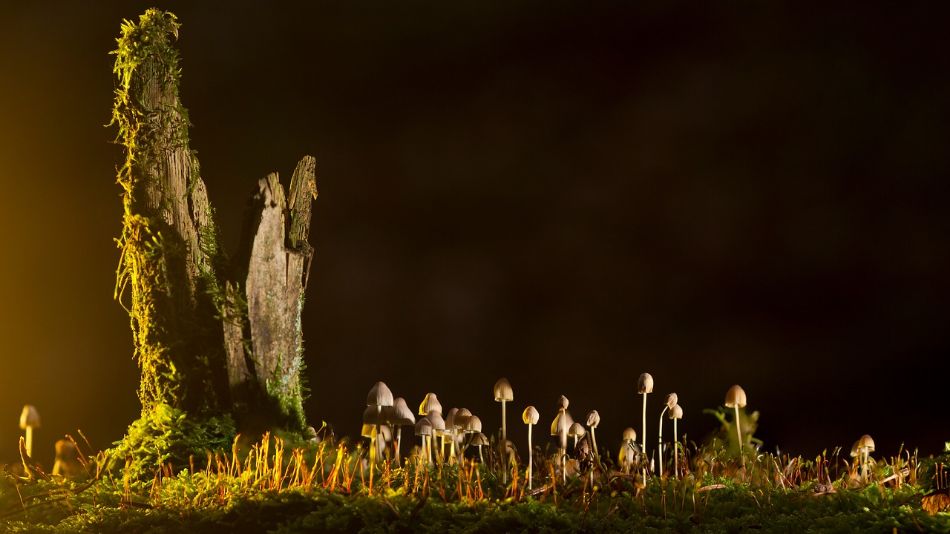Mushrooms, often hidden and underestimated, play a crucial role in the forest ecosystem. Let's see in detail how they contribute to the health of forests and the growth of the undergrowth.
Mushrooms: many species, many personalities!
Each species of mushroom presents different characteristics, different properties, different ways of being born, growing, and surviving. Let's explore the main actions that different types of mushrooms can take to thrive...
1. Symbiotic mushrooms
Mushrooms form mycorrhizae with plant roots. In this symbiosis, the plant provides sugars to the fungus, while the fungus returns minerals like phosphorus to the plant. This beneficial relationship is essential for the balance of the forest. Mycorrhizae increase nutrient absorption and improve plant disease resistance.
Symbiotic mushrooms live in symbiosis with other organisms, often plants. This beneficial relationship can be of different types:
- Mycorrhizae: mycorrhizal fungi form a symbiosis with plant roots, exchanging nutrients and water.
- Lichens: lichens are a symbiosis between fungi and algae or cyanobacteria.
- Endophytes: some fungi live inside plants without causing harm, but offering benefits like disease resistance or heat tolerance.
2. Saprophytic mushrooms
Saprophytic mushrooms are the decomposers of the undergrowth. They feed on dead organic matter, such as fallen leaves and rotten wood. During this process, they transform organic matter into inorganic substances, making them available to plants.
Without saprophytic mushrooms, the soil would accumulate useless debris, and plants would not have access to essential nutrients.
- Saprophytic mushrooms feed on dead organic matter, such as fallen leaves, rotten wood, and other debris. They play a fundamental role in the decomposition process.
- These fungi help recycle nutrients in the soil and maintain the ecological balance of the undergrowth.
3. Parasitic mushrooms
Parasitic mushrooms attack weak or diseased plants. Although it may seem negative, this interaction has a positive long-term impact. Parasitic mushrooms eliminate less resistant individuals, favoring the survival of stronger plants.
This process of natural selection contributes to the overall health of the undergrowth.
- These fungi derive their nourishment from living organisms, often plants or animals. They develop inside or on the surface of the host, causing damage or disease.
- Some examples of parasitic fungi include certain species of Lepiota, Galerina, Gyromitra, Cortinarius, and Amanita, some of which are poisonous.
Reproduction and biodiversity
The reproduction of mushrooms occurs through spores. These spores settle on substrates and germinate when environmental conditions are ideal. From here, filaments called hyphae emerge, expanding in the soil to form the mycelium. This network of filaments is fundamental for communication between fungi and plants. In summary, mushrooms are true allies of nature. They contribute to the regeneration of the undergrowth, soil cleaning, and biodiversity.
The next time you walk in a forest, remember that beneath your feet lies a fascinating and vital world, populated by these silent heroes: the mushrooms. 🍄🌿
The fungal kingdom is a universe in continuous evolution, with new scientific discoveries emerging every year about their extraordinary benefits for gut health and overall well-being. From now on, when you see a mushroom, you will no longer think only of its taste or appearance, but of all the therapeutic potential it holds in its fibers and bioactive compounds. ✉️ Stay connected - Subscribe to our newsletter to receive the latest studies on: Nature offers us extraordinary tools to take care of our health. Fungi, with their unique balance between nutrition and medicine, represent a fascinating frontier we are only beginning to explore. Continue to follow us to discover how these extraordinary organisms can transform your approach to well-being.Continue your journey into the world of fungi










